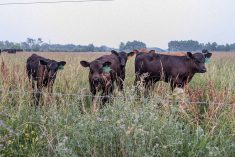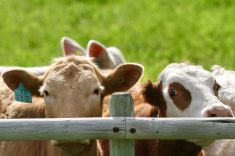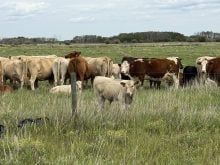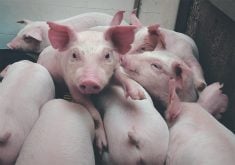Producers can increase the benefits of feeding canola to cattle and hogs by milling it to crack the hull, which releases more nutrients during digestion.
Dave Hickling, vice-president of canola use for the Canola Council of Canada, says cattle digest 50 percent of canola when it is whole with intact hulls. Digestibility increases to more than 70 percent when the feed is milled to crack the hull.
During a presentation at Manitoba Ag Days in Brandon last month, Hickling said grinding can be done on the farm using a mill with screens one-eighth of an inch across. He advised against using screens much coarser or finer than that.
Read Also

Mixed results on new African swine fever vaccine
The new African swine fever vaccine still has issues, but also gave researchers insight into how virus strain impacts protection against the deadly pig disease.
The frost that hit much of the Prairies late last summer produced an abundance of damaged canola.
“It didn’t kill the crop in most areas, but it left it with a high percentage of green seed in many cases,” Hickling said.
Green seed is the result of too much chlorophyll in harvested canola, and while it makes the crop unsuitable for processing into oil, it can provide high quality feed for beef and dairy cattle, hogs and poultry.
He said mild frost doesn’t significantly affect seed’s protein and oil content, but feed testing is recommended, especially with severely damaged canola.
Hickling said producers should be careful how much canola they feed to livestock because too much oil can interfere with digestion. This is especially true with beef and dairy cows, which shouldn’t receive more than one kilogram per day.
He recommended 10-15 percent canola seed in hog diets and up to 10 percent in poultry feed.
Feeding canola can be particularly beneficial to dairy producers. Hickling said research has demonstrated that canola in dairy rations can increase milk production by an average of one litre per cow per day.
“I’m not selling snake oil,” he said.
“That is a verifiable, legitimate statement.”
Producers who finish pigs for slaughter need to remember that blending in too much canola can lead to softer fat in the carcass, which can downgrade the pork.














